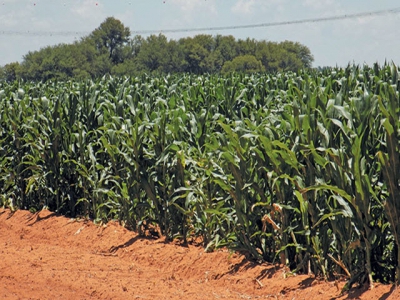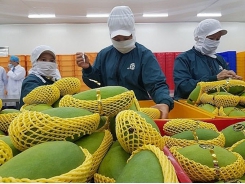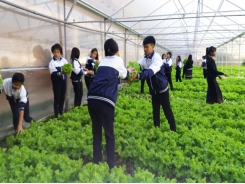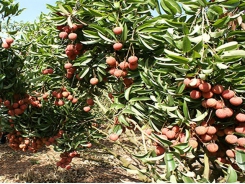Maize production: Managing critical plant growth stages

There is more to a maize land than meets the eye. It is a mass production facility with thousands of efficient ‘factories’ per hectare, each storing the sun’s energy through photosynthesis. A system this complex and valuable needs careful management, says Grant Pringle, Pannar agronomist in KwaZulu-Natal.
A maize land can be seen as thousands of small grain-producing ‘factories’ per hectare. Photo: FW Archive
A maize plant uses sunlight as an energy source to produce carbohydrates, protein and oil, which are stored as grain. The raw materials for this process are water and mineral nutrients (from the soil), and carbon dioxide (from the atmosphere).
The maize plant depends largely on nature to shape its growth, development and yield. However, a farmer can manipulate the environment by managing factors such as cultivar choice, soil tillage, crop rotation, fertilisation, irrigation and pest control.
If he understands the principles of maize growth and development, he will be able to apply these crucial production inputs at the correct time and rate to achieve the optimal yield and profit.
The highest visible collar
The leaf stage of the maize plant is identified by the top leaf that has a visible collar. At about the V6 stage, (V = vegetative), the lower leaves tear away from the stalk, due to its thickening and growth.
To determine the leaf stage after the ten-leaf stage, add five to the number of leaves with visible collars, as the first five leaves usually would have disappeared by then.
To determine the V-stage accurately, cut the lower stem lengthways; the first four nodes are stacked on top of one another in the lowermost section of the stalk.
The fifth node, located above the first elongated internode, represents the fifth leaf and serves as a reference point to determine the growth stage. Leaf stages are especially important when a chemical spray treatment linked to specific leaf stages is necessary.
Each V or R (reproductive) stage is defined when about half or more of the plants in the crop are in that specific stage. Although each stage of development is important, we focus here on management guidelines only for the VE, V3, V5, V12, V18, R1 and R2 to R6 growth stages.
VE to Emergence
Achieving a uniform plant population is the first step in optimising yield potential. Cool weather during planting generally limits nutrient uptake from the soil and retards development. Band-placing fertiliser plays an important role at this stage.
The primary root absorbs the fertiliser for that ‘pop-up’ effect needed for a strong seedling. A soil temperature above 15°C is favourable for uniform and quick germination, provided sufficient moisture is available.
A seedling that takes a long time to emerge has an increased risk of head and tassel smut as the pathogen penetrates the plant through the coleoptile. The fungus grows just behind the plant’s growth tip and appears only in the cob and tassel tissue during flowering.
The longer it takes for the plant to emerge, the greater the probability of the fungus developing.
Herbicide damage is linked to cold wet conditions. The longer it takes the plant to appear above ground, the greater the risk of damage as a result of fungal infection.

This diagram shows which critical production mangement practices should be implemented during certain growth stages of maize. Diagram: PANNAR
V3 stage
During the V3 stage, the growth point is still below ground level and at this early stage is heavily influenced by soil temperature. A low temperature can extend the time between leaf stages.
Hail, wind or frost damage at this stage has little or no effect on either the growth tip or the eventual grain yield. But it can delay the growth period by a few days. Waterlogging when the tip is still below ground, especially when associated with a high temperature, can kill the plants and lead to significant stand loss.
Weed control reduces competition from weeds for available light, water and nutrients. At an early stage, weeds are devastating and can reduce yield significantly. Good weed control in the early development stages contributes greatly to the success of a maize crop.
V5 stage
The growth tip and developing tassel are close to the soil surface and the stem quickly starts elongating. A new leaf appears every three days or so. The yield potential and the number of kernel rows per cob are determined.
Each internode will develop a cob, although usually only the top one or two cobs produce the harvest. To avoid nutritional deficiencies, top-dress with nitrogen, ideally completing this before the eight-leaf stage. Avoid root damage when applying fertiliser.
Fungal diseases can reduce the leaves’ capacity to photosynthesise, reducing yield potential, standability and grain quality. This is a good time to spray fungicide preventatively if foliar diseases are a problem in the area. Fungicides provide protection for 14 to 21 days.
Damage from hail, wind and leaf-feeding insects can reduce the rows on the cob. Frost at this stage can destroy the crop, while hail damage to the leaves can lead to a yield loss of 10% to 20%.
V12 stage
The plant is in a rapid growth phase, with a new leaf appearing every two days or so, and brace roots starting to form. The potential number of kernels per row on the cob (cob length) is determined at this stage.
However, the final number of kernels per row is completed only around the V17 stage.
The plant’s nitrogen needs are highest during this rapid vegetative development. Avoid water and nutrient shortages to ensure that the maximum number of kernels and cob size develop.
The number of kernels and cob size depends on the time requirements of the genetics involved. An early hybrid progresses through these stages more rapidly and tends to produce smaller cobs.
One reason for planting an early hybrid at a higher plant population is to compensate for the smaller cobs. Avoid spraying fungicide during V10 to V14; this increases the risk of impaired cob development or arrested ear syndrome.
V18 stage
The roots have penetrated to a depth of 1,8m if soil depth has allowed this. The cob becomes visible in the leaf collar. The plant, about a week away from silk emergence, develops rapidly.
Stress at this stage will delay cob development more than it will delay tassel development, resulting in pollen being produced before the silks even emerge. Severe stress can be highly detrimental.
If leaves are already wilted in the morning due to moisture stress, a crop loss of up to 4%/ day can result.
Prolific hybrids are usually more stable under stress, as cob development is less restricted than in single-cobbing hybrids under the same conditions. Yield loss from hail can be up to 100% at this stage.
R1 stage
The reproductive stage starts when the silk appears. Pollination takes place over five to 10 days. As the ovules are fertilised, you should ensure that the maximum number of potential kernels (ovules) develop into kernels.
Maize is sensitive to stress at this time. Stress can cause kernel abortion at the cob tip, and wilted leaves from moisture stress in the morning can lead to a yield loss of up to 7%/ day. Hail can cause 100% yield loss through defoliation. Leaf diseases can also be a problem.
The plant’s potassium uptake is almost complete by now. Potassium plays a major role in pollination and grain filling, and a shortage of this element slows down silk emergence and even leads to unfilled and shrunken kernels at the tip of the cob.
A low potassium level and excessive nitrogen can contribute to lodging.
The plant starts translocating nutrients from other parts of the plant to the cob. At this stage, leaf analyses and nutrient concentrations in the plant are well correlated with the final grain yield and efficiency of the specific fertilisation programme.
The plant is ready to start storing carbohydrates in the endosperm and dry matter quickly accumulates in the kernels. Worm or hail damage to the cob can lead to secondary infection of Fusarium or other fungi.
R2 to R6 stages
Active grain filling takes place during these stages. The plant is now in its final critical production stage and channels carbohydrates to the cob.
A plant that experiences stress during grain filling is more likely to be infected by stem and root rot.
Stress at this point can reduce the number, size and weight of the harvestable kernels. This stage of kernel development is directly linked to potential damage if stress occurs.
Try to keep the plants green for as long as possible to ensure they spend as long as possible in each reproductive stage, maximising dry matter accumulation.
It is very important to protect the leaves against disease.
The grain is physiologically mature when a black layer forms at the base of the kernels, coinciding with about 80% of the bract leaves having turned brown. Stress during this period can cause kernels to mature prematurely, which is unfavourable for the grain size and kernel weight.
Có thể bạn quan tâm
Phần mềm

Phối trộn thức ăn chăn nuôi

Pha dung dịch thủy canh

Định mức cho tôm ăn

Phối trộn phân bón NPK

Xác định tỷ lệ tôm sống

Chuyển đổi đơn vị phân bón

Xác định công suất sục khí

Chuyển đổi đơn vị tôm

Tính diện tích nhà kính

Tính thể tích ao hồ




 Tiền Giang seeks systematic farming restructure, adherence to…
Tiền Giang seeks systematic farming restructure, adherence to…  Luc Ngan lychee yields some 80,000 tonnes
Luc Ngan lychee yields some 80,000 tonnes